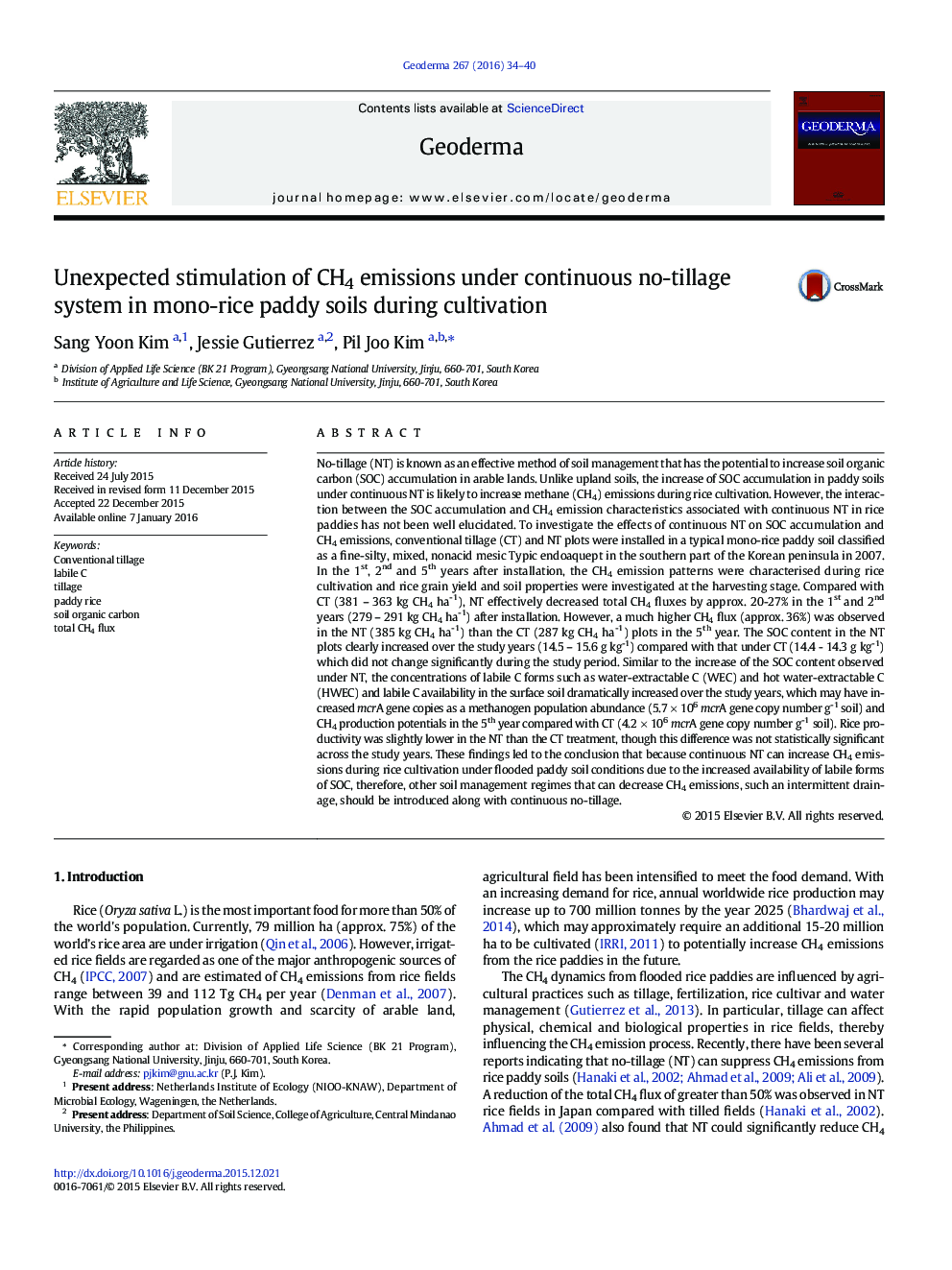| کد مقاله | کد نشریه | سال انتشار | مقاله انگلیسی | نسخه تمام متن |
|---|---|---|---|---|
| 6408372 | 1629450 | 2016 | 7 صفحه PDF | دانلود رایگان |

- We investigated the effect of no-tillage on CH4 emissions in rice field.
- No-tillage decreased CH4 emission at the initial years after installation.
- Labile SOC concentration increased in no-tillage with the lapse of years.
- Continuous no-tillage management increased CH4 emission than conventional tillage.
- Rice yield do not significantly differ between conventional and no-tillage systems.
No-tillage (NT) is known as an effective method of soil management that has the potential to increase soil organic carbon (SOC) accumulation in arable lands. Unlike upland soils, the increase of SOC accumulation in paddy soils under continuous NT is likely to increase methane (CH4) emissions during rice cultivation. However, the interaction between the SOC accumulation and CH4 emission characteristics associated with continuous NT in rice paddies has not been well elucidated. To investigate the effects of continuous NT on SOC accumulation and CH4 emissions, conventional tillage (CT) and NT plots were installed in a typical mono-rice paddy soil classified as a fine-silty, mixed, nonacid mesic Typic endoaquept in the southern part of the Korean peninsula in 2007. In the 1st, 2nd and 5th years after installation, the CH4 emission patterns were characterised during rice cultivation and rice grain yield and soil properties were investigated at the harvesting stage. Compared with CT (381 - 363 kg CH4 ha-1), NT effectively decreased total CH4 fluxes by approx. 20-27% in the 1st and 2nd years (279 - 291 kg CH4 ha-1) after installation. However, a much higher CH4 flux (approx. 36%) was observed in the NT (385 kg CH4 ha-1) than the CT (287 kg CH4 ha-1) plots in the 5th year. The SOC content in the NT plots clearly increased over the study years (14.5 - 15.6 g kg-1) compared with that under CT (14.4 - 14.3 g kg-1) which did not change significantly during the study period. Similar to the increase of the SOC content observed under NT, the concentrations of labile C forms such as water-extractable C (WEC) and hot water-extractable C (HWEC) and labile C availability in the surface soil dramatically increased over the study years, which may have increased mcrA gene copies as a methanogen population abundance (5.7 Ã 106mcrA gene copy number g-1 soil) and CH4 production potentials in the 5th year compared with CT (4.2 Ã 106mcrA gene copy number g-1 soil). Rice productivity was slightly lower in the NT than the CT treatment, though this difference was not statistically significant across the study years. These findings led to the conclusion that because continuous NT can increase CH4 emissions during rice cultivation under flooded paddy soil conditions due to the increased availability of labile forms of SOC, therefore, other soil management regimes that can decrease CH4 emissions, such an intermittent drainage, should be introduced along with continuous no-tillage.
Journal: Geoderma - Volume 267, 1 April 2016, Pages 34-40